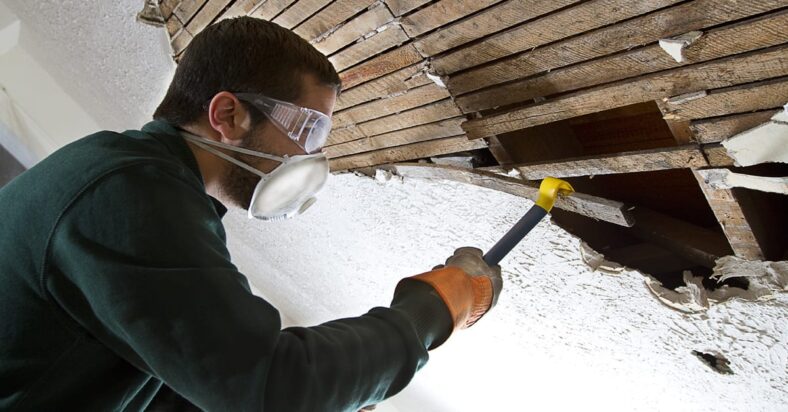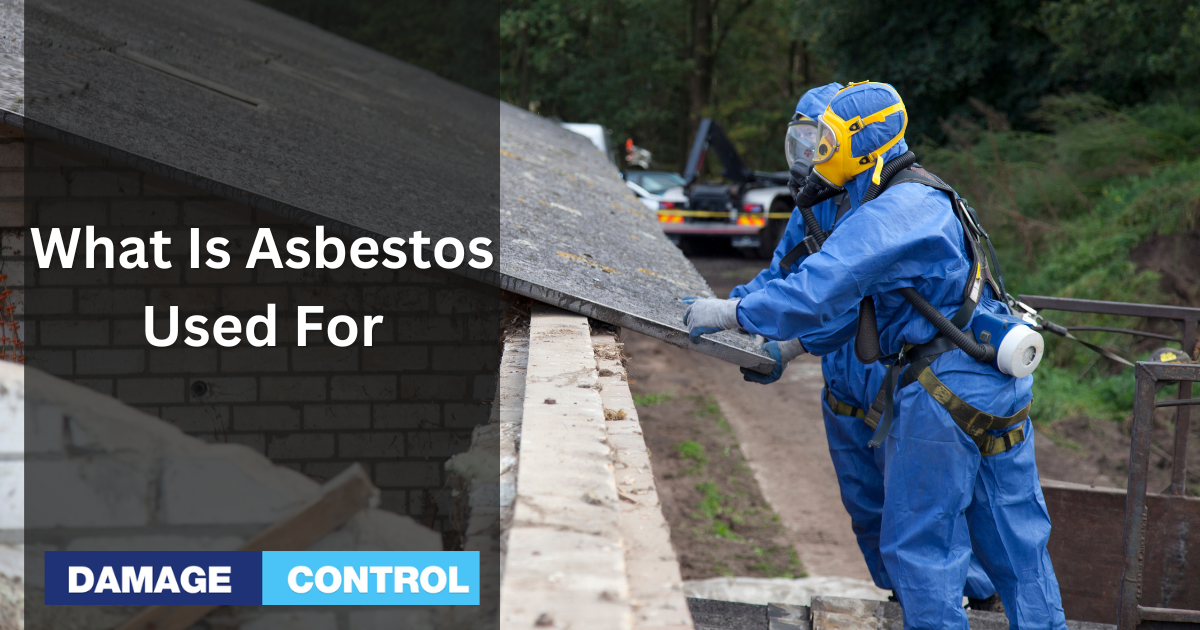For centuries, asbestos was the big cheese. This mineral superhero was heat, fire, and chemical resistant – a triple threat. Its durability? Rock solid. You'd find it strutting its stuff in construction, automotive, and manufacturing industries.
Home builders loved it. Insulation, roofing shingles, floor tiles, cement products – all had a pinch of asbestos. Brake pads, clutches, even textiles, paper, and packaging couldn't resist its charm. Its secret power? Handling high heat and cutting down friction.
But every superhero has a villain. For asbestos, it’s a nasty link to health problems like lung cancer and mesothelioma. Disrupt it and – poof! – tiny, dangerous fibers take to the air. Inhale them? Trouble.
Nowadays, many countries, including Uncle Sam's turf, have kicked asbestos to the curb. But like a bad penny, it can still turn up in old buildings and products. That's why it’s crucial to know this about asbestos – the good, the bad, and the ugly.
History of Asbestos

Long, long ago in ancient Greece, asbestos was the big deal. It jazzed up pottery and napkins, insulated homes, even graced the robes of the gods in temple flames. Flash forward to the 20th century, and it's a rock star in construction. Talk about versatile – this mineral was in everything! Roofing shingles, floor tiles, paper, and cement products all took a page from the asbestos playbook. And let's not forget its power moves in brake and transmission parts, and heat-resistant fabrics.
But hold the phone. Asbestos had a skeleton in the closet. Lung cancer. Mesothelioma. Asbestosis. Yes, the ugly truth came out in the 70s. But whispers of its health risks were in the air as early as the 20th century.
Now, picture this: a time as far back as 4000 B.C. Here, asbestos, with its long, hair-like fibers, lit up lamps and candles as wicks. Fast forward a couple of thousand years. Egyptian pharaohs, snug in their eternal sleep, wrapped in asbestos cloth to fend off decay. Even Theophrastus, in his ‘On Stones' around 300 B.C., gave a shout-out to something we think was asbestos.
The asbestos boom hit overdrive in the 19th and 20th centuries. Mining and production went bananas, especially in North America and Europe. World War II? Asbestos was there, lending its muscle to construction and shipbuilding. But that led to a ton of exposure for workers and the military.
Today, we've got asbestos on a short leash. It's regulated up the wazoo in many countries, all thanks to the health risks. Sure, it's lurking in some older buildings and products, but we're onto it. We're pulling out all the stops to remove it safely and keep exposure to a minimum.
Properties of Asbestos
Picture this: a mineral with fibers as thin as a hair. It can handle a crazy amount of heat (up to 1000°C, can you believe it?), shrugs off most chemicals, and lasts longer than that fruitcake you got last Christmas. This superstar is asbestos, and boy, can it do a lot.
Now imagine wrapping your hot pot in something that doesn't melt or burn – thank asbestos for its heat resistance. Working with harsh chemicals? Asbestos laughs in the face of acids and alkalis. It's also a tough cookie, weathering the years and the elements without batting an eye.
But its talents don't stop there. Asbestos is an electric guitar on a silent stage, stopping electrical currents in their tracks. Plus, it's got this knack for muffling sound. Think about that next time you're jamming to your favorite tunes in your well-insulated room.
But wait, there's a plot twist. For all its superpowers, asbestos has a dark side. Breathed in, its fibers turn rogue, causing lung cancer, mesothelioma, and other nasty diseases. That's why many countries have given it the boot, with others keeping a tight rein on its use. Asbestos: a true hero turned villain.
Types of Asbestos
Now, asbestos isn't just one thing. Imagine it like a band, where each member brings something different to the table. There are six of them in the Asbestos Squad: Chrysotile, Amosite, Crocidolite, Tremolite, Anthophyllite, and Actinolite.
Chrysotile, also known as white asbestos, is like the lead singer – the one you see most often. You'll find this one in stuff like roofing materials, floor tiles, and insulation.
Amosite, also known as brown asbestos, was big in the insulation game, especially with ceiling tiles and pipe insulation. It was also a fan of cement products like corrugated sheets and pipes.
Crocidolite, aka blue asbestos, was the go-to for insulating steam engines and had cameos in some spray-on coatings, pipe insulation, plastics, and cement products.
The last three – Tremolite, Anthophyllite, and Actinolite – they're more like the backup singers, not as widely used. Tremolite and Actinolite had a thing for some insulation products, while Anthophyllite liked to hang out in insulation products and construction materials on occasion.
But remember, despite their different roles and uses, all members of the Asbestos Squad are bad news for our health. They can cause lung cancer, mesothelioma, and other gnarly respiratory diseases. That's why so many countries have turned the volume down on asbestos, with heavy regulations and a lot of “no more” signs.
Uses of Asbestos

Asbestos, with its unique properties, has been quite a jack-of-all-trades, showing up in a bunch of different applications. It's a natural mineral that's really good at resisting heat and fire, and it's a champ at insulating. So it's been the star in a whole lot of industries, from construction and cars to manufacturing.
Construction
Asbestos was the go-to for the construction industry for years. Why? It's a pro at resisting fire. You'd find it hanging out in all sorts of building materials, like roofing shingles, ceiling tiles, and insulation. Even cement products like pipes and wallboards. But, due to the health risk that comes along with exposure to asbestos, many countries have put the brakes on its use in construction.
Automotive
Cars and asbestos had a thing too. Because asbestos is such a heat-resisting hero, it was used in brake pads, clutch facings, and gaskets. But again, those health risks have led many countries to slam the door on its use in the automotive industry.
Manufacturing
Asbestos also had a big role in various manufacturing processes. It was used in creating textiles, like fireproof suits and blankets, and in making electrical components, such as insulation for wires and cables.
But even with all these uses, the health risks tied to asbestos – think lung cancer, mesothelioma, and other respiratory diseases – have led to it being heavily regulated and banned in many places. And that's led to a major drop in its use. Today, asbestos-free alternatives have taken center stage and are now used in many applications.
Conclusion
Alright, pals, that's what asbestos has been used for. But remember, knowledge isn't just power—it's protection. So let's ensure we're informed about the aspects of this tricky mineral.
Now, one of the most common places you might stumble upon asbestos is in old tiles. Want to know more about this? Review ‘The dangers of asbestos tiles: Identifying them‘. It's packed with information to help you determine if that retro flooring is just old-school cool or a danger zone.
And then there's this thing called non-friable asbestos—essentially, asbestos that's less likely to crumble and get those nasty fibers in the air. Sound interesting? Then hop on over to ‘Here is an informal guide to asbestos that is non-friable' to learn all the deets.
You've probably heard about asbestos insulation before, right? If you're curious about what it looks like and how to identify it, check out ‘Asbestos Insulation: What To Look For'. Knowledge like this can help you avoid unnecessary exposure.
If you're unsure whether there's asbestos lurking in your home, getting it tested is a smart move. And we've got just the resource for you: ‘An Introduction to Asbestos Testing'. This article walks you through the whole process, step by step.
For those in the Sunshine State who need answers ASAP, we have reliable and professional testing (asbestos). If you need a fast, reliable service, we are your guys.
Keep learning, folks. The more we know, the safer we'll be!

